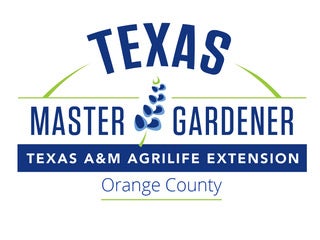Master Gardener: Spring is around the corner
Published 1:00 am Saturday, January 15, 2022
|
Getting your Trinity Audio player ready...
|
By John Green
Texas Certified Master Gardener, Orange County Master Gardeners
Hello fellow gardening enthusiasts! Before you know it, spring will be here. Last weeks’ discussion focused on flower and vegetable seed germination. Germinating seeds indoors several weeks before the last anticipated frost, (March 10th) allows us to grow seeds into small plants (seedlings). Once the seedlings are 6-8” tall they can be transplanted into the garden. Starting seeds also provides gardeners the ability to grow exactly the plants desired, rather than choosing from available selections at big box stores or mega supermarket shopping centers. The varieties or cultivars available at these stores may not be what we are searching for, best suited to our environment or our growing zone which is 9a.
Now it’s time to get a head start on Spring gardening tasks by becoming weekend warriors. No, seriously, I’m joking. Speaking from years of experience (spanning several decades), this isn’t the best way to accomplish garden tasks! It’s better to develop a simple plan of action before starting any gardening activity to allow you to work smarter rather than harder. We have time a plenty before spring truly arrives to build our best vegetable and flower gardens.
Typically, we have mild winters in SETX, so when the weather provides nice warm days, make available some time to get outside and work in the garden, readying it for spring. Most importantly make a list and check what needs to be done now:
- Has a garden task list been created?
- Has the garden been cleared of last seasons’ plants and weeds?
- Are winter vegetables planted that are no longer producing? Cut them back to ground level leaving the roots to decompose in the soil for spring plants to benefit.
- Does soil or compost need to be added to the garden? This is the time to feed beneficial microbes in the soil with an organic fertilizer. Remember chemical fertilizers do not feed the important microbes in the soil which are needed to move nutrients from soil to your plants.
- What would you like to plant in spring?
- Have you decided planting locations?
Even though our weather is cold for a few days then warm again, it is still okay to plant some types of winter vegetables for your family’s enjoyment. Here are a few of them: mustard or turnip greens, pak choi, spinach, Swiss chard, daikon radish, lettuce, radish, beets, carrots, cauliflower, broccoli, and potatoes. Of course, there are flowers that can be planted now as well: dianthus, viola, snapdragon, pansy, sweet alyssum, and daisies. Finally, lets’ not forget about ornamental cabbage and kale, both of which make dramatic garden statements with color and texture.
January is the best month to plant trees, since it is less stressful on a tree to be planted while dormant. Decide in a general area where the tree is to be planted, do this first before purchasing. It will need a large amount of room to spread out and grow. Once a location is determined, check for underground utilities so you don’t plant it on top of them. Carefully read the tree planting instructions as it will state height and canopy (width) of the tree at maturity. Example: if the tag states the tree will have a height of 30 feet and 30 feet canopy, then make certain to plant it at least 30 feet from buildings, power lines, underground piping, or any other type of structure.
Finally, check your gardening tools. Are they in good condition? If not, thoroughly clean with soap and water, then knock rust of them with a light sanding of sandpaper. Allow to dry completely then coat with a thin layer of oil. To keep rust from returning, partially fill a 5-gallon bucket with sand and add used oil to the sand, mix well. Store shovels, trowels, and other garden tools in the bucket. Occasionally dip your clippers into the sand to keep them free of grime. Doing this, you will be surprised how clean the gardening tools will remain!
For more information or to have your gardening questions answered please contact us:
Orange County TX Master Gardeners, Website: https://txmg.org/orange, Facebook: Orange County Texas Master Gardeners Association, Orange County Master Gardener Helpline: (409) 882-7010, Email: extension@co.orange.tx.us.






